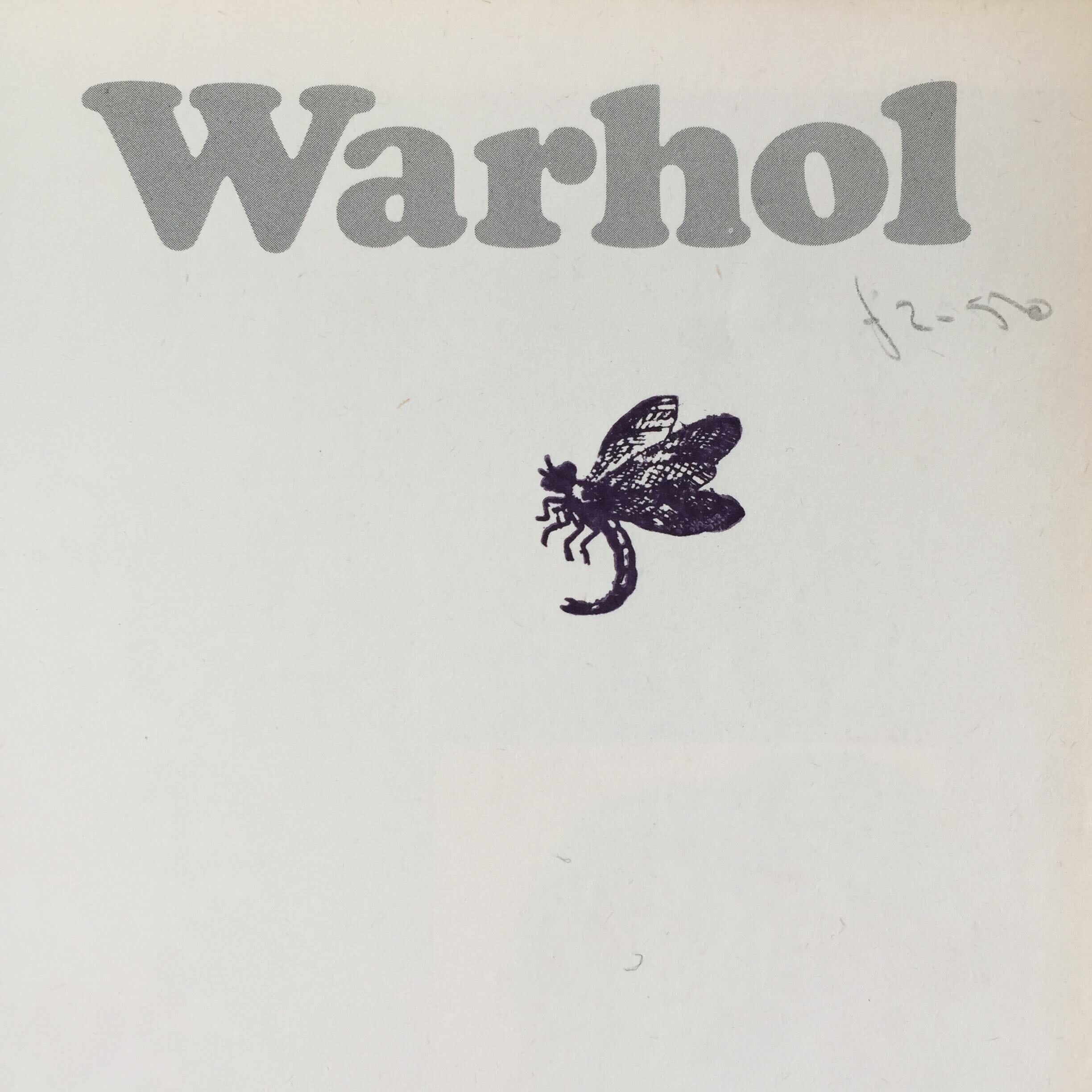Banality as truth — (Warhol, Tate Gallery catalogue, 1971)
This months charity shop find is a Tate Gallery catalogue from 1971 on Andy Warhol. The format is square with Cooper Black display type, Caslon body copy and Univers details and captions.
The cover has a reproduction of Marilyn Monroe, the back a similar portrait format of Elizabeth Taylor. The spine is the only area on the cover that shows the name of the book. It just reads Warhol in Cooper Black running up the spine.
Inside cover; what does the dragonfly mean?
The book is illustration heavy with a mixture of black & white and colour reproductions. The uncoated paper stock at the back of the book shows one-man exhibitions, a selected bibliography and a catalogue list.
By the artists own request, the works in the book start in 1962, the year the Campbell’s soup cans were shown at the Ferus Gallery in Los Angeles. This perhaps draws a line between his graphic / commercial work and his fine art work. The book then covers about 8 years of his practice including Soup cans, disasters, portraits, flowers and Brillo boxes, but excludes most of his music, sound, film, dance and light as well as his writing.
The essay by Richard Morphet explores the idea that Warhol’s work is very much connected to the legacy of American Abstract Expressionism even if Warhol himself can’t quite see this. Morphet continually draws parallels between Pollock, Rothko and Newman as if he is trying to raise Warhol’s practice a few notches and give it a bit more academic clout. Basically, no matter how much Morphet declares that Warhol’s work has great depth and weight Warhol keeps reiterating that he is fully turned on by the banality of the surface. This was his truth.
Here are some of my favourite Andy quotes from the book:
“I think they are so great, they’re so clear, they’re so true, their surfaces are great. I like what they have to say: they don’t really have much to say, so that’s why they’re so good. I feel the less something has to say the more perfect it is.”
“We heard de Gaulle speak for three hours ... I don’t know what he was saying but ... he had a lot of style and it was sort of great ”
“I just read the textures of words. I see everything that way, the surface of things, a kind of mental Braille. I just pass my hands over the surfaces of things.”
And one final aside to round this article up, I wanted to show you one of my print/paintings from 2008, I think Warhol would have enjoyed this piece of work. It’s based on my thoughts about Wittgenstein but I think it has just as much to do with Andy Warhol as well.
Exclude nothing, say nothing, 2008
Until next month my friends. Keep it banal.
Book size: 210x210x6mm
Paper: White coated stock (Last section: deep red/cerise uncoated stock)
Pages: pp 102
Cost: £2.50
Source: SCT charity shop in Leytonstone High Road
Text and images © Chris Tosic 2020





